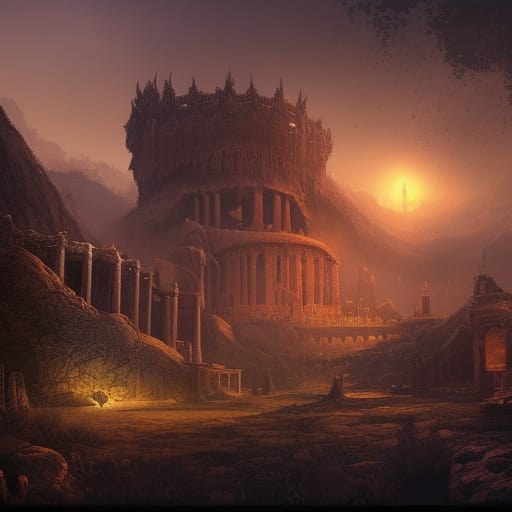“Theban Necropolis: The Cursed and Abandoned Place”

Theban Necropolis is a cursed and ancient burial ground located on the west bank of the Nile river. The site is home to the tombs of some of Egypt’s most powerful pharaohs and nobles, dating back to the New Kingdom period. Those who dare to venture into the necropolis must be prepared to face the wrath of the mummified pharaohs and their undead minions.
- Coat of arms/Flag
- Patron God – Meretseger
- General Alignment –
- Settlement size –
- Corruption +; Crime +; Economy +; Law +; Lore +; Society +
- Qualities –
- Danger +
- Demographics
- Country –
- Government –
- Legislature –
- Population –
- Places of interest –
- Current Ruler –
- Other Notable residents –
- Marketplace
- Base Value ; Purchase Limit ; Spellcasting
- Minor Items ; Medium Items ; Major Items
Visitors to the necropolis are greeted by the imposing remains of the mortuary temple of Hatshepsut, one of Egypt’s most powerful female pharaohs. The temple’s grand entrance is flanked by towering columns, and its walls are adorned with intricate carvings depicting the pharaoh’s victories in battle and her devotion to the gods. However, it is said that Hatshepsut’s spirit still guards her temple, cursing those who disturb her tomb.
Beyond Hatshepsut’s temple, the necropolis is home to a vast network of tombs and funerary complexes, each filled with its own unique curses and undead protectors. The Valley of the Kings, for example, is home to the tombs of many of Egypt’s most powerful pharaohs, including Tutankhamun and Ramesses the Great. The tombs are filled with intricate hieroglyphics and stunning paintings that tell the stories of the pharaohs’ lives and their journey to the afterlife. But it is also said that the pharaohs still reside within their tombs, cursed to protect their treasures and punish tomb robbers.
As you explore the necropolis, you may also come across the Colossi of Memnon, two massive statues that once stood guard at the entrance to Amenhotep II’s funerary temple. The statues are now said to be possessed by the spirits of long-dead soldiers, who will fiercely defend the temple from intruders.
The necropolis also holds a number of smaller tombs belonging to nobles and court officials. These tombs may not be as grand as those of the pharaohs, but they are no less dangerous. They are protected by curses and undead guardians, offering a glimpse into the lives of the everyday people of ancient Egypt, and the funerary texts and carvings within reveal much about the beliefs and customs of the time.
As you wander through the necropolis, you may feel a sense of fear and dread, as if the spirits of the pharaohs and nobles are still present within these ancient burial grounds, ready to unleash their curses upon those who dare to enter their tombs. And it is said that even today, many of the tombs and temples remain sealed, their curses and undead protectors waiting to be unleashed upon unsuspecting explorers.

 Buy me a coffee
Buy me a coffee